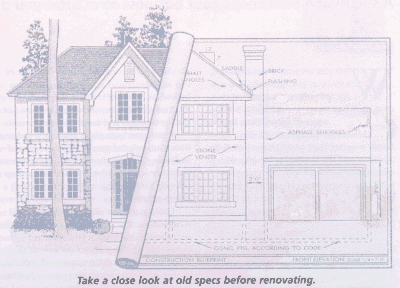By Ron Hungarter
In one particular instance, fire had seriously damaged a home, requiring that the entire roof structure - including the trusses, sheathing and shingles - be replaced. the owners hired a contractor who specializes in fire reconstruction and gave him specifications from their insurance company. Unfortunately, both the insurance adjuster and the owner told the contractor to restore the home exactly as it had been, a bad decision. The original specs were flawed, causing this otherwise reputable contractor to install items now known to create serious environmental problems - problems compounded by the contractor's own unwitting recommendation to install two additional gable end vents.
FAULTY VENT SYSTEM CREATES PROBLEMSAs we now know, mixing outlet vent types is a no-no. The more efficient outlet vent transforms the weaker outlet vent into an inlet vent. air then simply short circuits between these two vents, eliminating the needed draw of air flow in from the soffit and then up along the roof sheathing. The homeowner sold the property shortly after the restoration was complete. During the first winter, the new homeowners noticed the new plywood roof sheathing was dripping wet and beginning to buckle. Worse, a serious black mold had developed in the attic, to which one of the new homeowners was seriously allergic. He broke out in hives and skin rashes, making him both uncomfortable and ill. The problem became so severe that he called a lawyer to discuss a lawsuit against this otherwise reputable contractor. The stage was set for a lose-lose battle. The attorney hired an inspector, who spotted the cause of the problem and suggested that the homeowners and contractor solve the dispute out of court. The two sides discussed the findings and agreed on a quick and inexpensive resolution to the potentially very serious problems:
The allergic homeowner is no longer subjected to mold in his newly purchased home, the plywood roof sheathing is no longer wet and swollen, the air is flowing naturally in and out of the attic, the contractor is relieved to know that a problem has been eliminated, and no one is spending excessive amounts of money and time on litigation. NWB
Ron Hungarter is a licensed contractor
|
 Sometimes even reputable contractors use ill-advised construction practices, leading to serious health
problems for homeowners or even lawsuits. Fortunately, this article has a happy ending, but not without
effort and compromise on everyone's part.
Sometimes even reputable contractors use ill-advised construction practices, leading to serious health
problems for homeowners or even lawsuits. Fortunately, this article has a happy ending, but not without
effort and compromise on everyone's part.